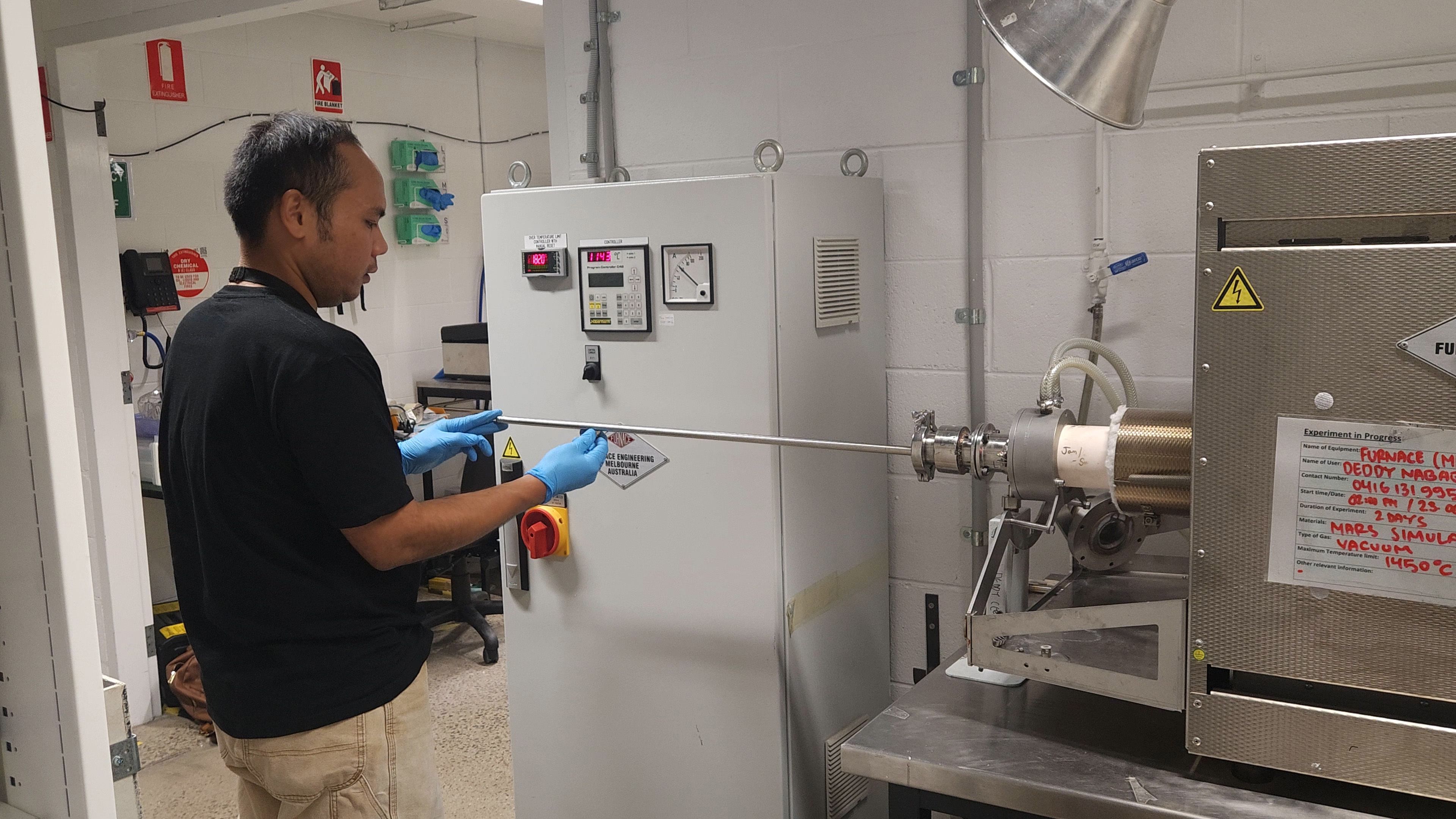The idea of building settlements on Mars is a popular goal of billionaires, space agencies and interplanetary enthusiasts.
But construction demands materials, and we can't ship it all from Earth: it cost US$243 million just to send NASA's one tonne Perseverance Rover to the Red Planet.
Unless we're building a settlement for ants, we'll need much, much more stuff. So how do we get it there?
CSIRO Postdoctoral Fellow and Swinburne alum Dr Deddy Nababan has been pondering this question for years. His answer lies in the Martian dirt, known as regolith.
"Sending metals to Mars from Earth might be feasible, but it's not economical. Can you imagine bringing tonnes of metals to Mars? It's just not practical," Dr Nababan says.
"Instead, we can use what's available on Mars. It's called in-situ resource utilisation, or ISRU."
More specifically, Dr Nababan is looking at astrometallurgy - making metals in space.
Building an off-world foundry
As it turns out, Mars has all the ingredients needed to make native metals. This includes iron-rich oxides in regolith and carbon from its thin atmosphere, which acts as a reducing agent.
Swinburne University of Technology astrometallurgist, Professor Akbar Rhamdhani, is working with Dr Nababan to test this process with regolith simulant - an artificial recreation of the stuff found of Mars.
"We picked a simulant with very similar properties to that found at Gale Crater on Mars and processed them on Earth with simulated Mars conditions. This gives us a good idea of how the process would perform off-world," he says.

The researchers used a regolith simulant that mimics the materials found at Gale Crater on Mars.
The simulant is placed inside a chamber at Mars surface pressure and heated at increasing temperatures. The experiments showed pure iron metal formation around 1000°C, with liquid silicon-iron alloys produced around 1400°C.
"At high enough temperatures, all of the metals coalesced into one large droplet. This could then be separated from liquid slag the same way it is on Earth," Professor Rhamdhani says.
Along with Dr Nababan, Prof Rhamdhani is collaborating with CSIRO's Dr Mark Pownceby to further advance the process. They're particularly focused on making metals with zero waste, where the byproducts of the process are used to make useful items.
If you can't ship it, make it
ISRU is a growing area of space science because in rocket launches, every kilogram counts. While the cost of launches is going down, the demands of human exploration are immense.
But huge developments are already happening, including the first demonstration of ISRU off-world. The MOXIE experiment on board the Mars Perseverance rover produced breathable oxygen using only the carbon dioxide in the planet's atmosphere.
Metal production is the next giant leap. Prof Rhamdhani hopes Mars-made alloys could be used as shells for housing or research facilities, and in machinery for excavation.

The regolith simulant is placed in a furnace that recreates Martian conditions and heated, producing iron.
"There are certainly challenges. We need to better understand how these alloys would perform over time, and of course whether this process can be recreated on the real Martian surface," Prof Rhamdhani says.
But in the meantime, Swinburne and its partners are doubling down. Prof Rhamdhani together with Dr Nababan and Dr Matt Shaw, another CSIRO researcher and Swinburne alum, recently delivered a 4-day bespoke workshop on astrometallurgy in South Korea. The feedback was promising.
"We're starting to see increased interest in this field globally as the world gets serious about Mars exploration," he says.
"To make it happen, we're going to need experts from many fields - mining, engineering, geology, and much more."
For Dr Nababan, the benefits go beyond exploration. He hopes their research will also drive more efficient metallurgy here on Earth.
"By doing this, I wish that I can help the development of space exploration, and at the end it will bring good to human life here on Earth."






